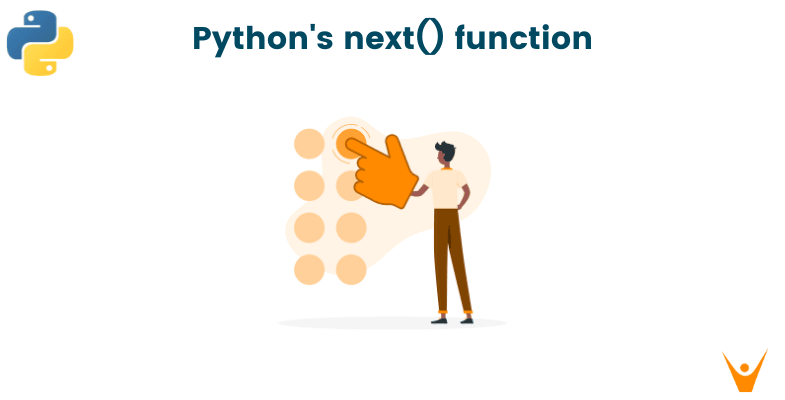Python is comparatively an easy programming language with a large set of in-built functions to assist coders in quickly completing numerous jobs at once. One such example of Python’s next() method, which we will be learning about here today.
What is the next() function in Python?
The next() function is an in-built function in Python that is used on iterating operations and helps to return the next item from the iterators. The next item in the collection is fetched using this method. The function requires two default arguments, i.e. the iterator and a default value. After receiving the arguments, it performs the task and simply returns the element.
In Python programming language, the next() function uses iterators and throws an exception if there are no items that can be iterated further. To prevent this mistake, a default value can be set for the same. If the sequence contains no more values, the function throws a ‘StopIteration’ exception.
As Python's next() method can be used implicitly in 'for' loops, 'while' loops, and more, iterate through items, it's likely that you've used it at some point without realizing it.
Syntax: next(iterator[, default])
Example:
my_list = [1, 2, 3, 4, 5] my_iterator = iter(my_list) print(next(my_iterator)) print(next(my_iterator)) print(next(my_iterator)) print(next(my_iterator, "No more items")) print(next(my_iterator, "No more items")) print(next(my_iterator, "No more items"))
Output:
1 2 3 4 5 No more items
In the above example given, first, a list is established called my list that contains some values, and then an iterative method is created using my_iterator with the help of the iter() function. While getting the output of each function, the next() function is used to get the next item of the iterator operation.
The final step is to obtain any remaining items from the iterator using the next() function’s default value provided.
How to use the next() function with the condition?
Python’s next function can also be utilized in conjunction with a given condition to get a subsequent item from the iterator if specific requirements are met. So, the given conditions are based on while and if loops. These can be used to check each value that is being returned by the next().
Look at the following example to understand how to use the next function with conditions in Python:
my_list = [1, 2, 3, 4, 5] my_iterator = iter(my_list) while True: value = next(my_iterator) if value % 2 == 0: print("Next even number is:", value) break
Output:
Next even number is: 2
In the above example, we use the iter() method to build a list called my list and an iterator called my iterator. Then, until the next even number of the sequence is found, the while loop repeatedly calls the next() function.
After that, an if statement is used to check all the values returned by the next() function using the if statement. And when an even number is found, the loop breaks prints the output, and exits the loop.
But, keep in mind that if the series doesn't contain any even integers, this code will produce a StopIteration exception when the iterator is empty. To prevent this, one can provide a default value to the next() function using next(iterator, default) rather than just next().
Benefits of the next function in Python
There are several benefits of the next() function in Python as given below:
- The efficiency of Memory use: With the help of iterators, the next() functions generate values asynchronously, one at a time, as required. Due to this method, only one value if kept in memory at a time, so it uses less memory than building huge tuples or lists.
- The efficiency with large datasets: Using an iterator with the next() method rather than putting the entire dataset into storage in one go may be more useful when dealing with massive data. Individuals can use enormous datasets without trying to run out of space thanks to this.
- Flexibility: Users can make use of the next() function with any iterable object, which includes specially created objects that individual constructs by themselves. Thus, this function provides a great deal of flexibility in terms of organizing codes and the data structures needed while iterating the respective object.
- Program Flow: With the help of it, the flow of the program can be controlled easily in a loop. For instance, it can be used to filter out values that don’t match certain criteria or commands in the program. Moreover, performing some action on each item in the sequence before moving on to the next also is done by this method.
Drawbacks
While utilizing the next() method has a lot of advantages, there are a few potential drawbacks as well: First, while functioning with iterators, users can hardly access the subsequent element in the series; unlike with a list or tuple, one cannot skip to a particular item straight-away. As a result, accessing a particular item in the series or working with information within a specific order may become more challenging.
Also, calling next() has the potential to raise a StopIteration exception if there are no more items in the iterator. If you're not prepared for it and haven't handled it properly in your code, this could be an issue.
Conclusion
All things considered, the next function in Python can be a helpful tool for working with iterators, but it's necessary to be aware of its restrictions and potential problems. Happy Learning :)








